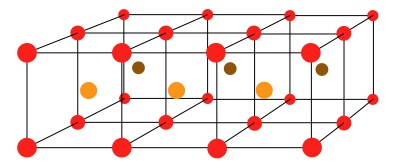Skip over navigation

These two layers together could also be viewed as representing six cubes:




Or search by topic
Number and algebra
Geometry and measure
Probability and statistics
Working mathematically
Advanced mathematics
For younger learners
Finding 3D Stacks
Age 7 to 11
Challenge Level 





This activity may be used as a follow-on for those who have successfully worked at Doplication.
Let me help you visualise this representation of a 3D situation.
The picture below shows a 2 by 3 by 4 arrangement of red spheres, which you might see as two layers of 3 by 4:

These two layers together could also be viewed as representing six cubes:

In the top picture the centre of each cube is shown with a light or dark brown sphere.
How many spheres are there altogether in this 2 by 3 by 4 arrangement?
How did you count them?
Use your system of counting to find the total number of spheres for other sizes, for example 3 by 3 by 3; 3 by 4 by 4; 4 by 4 by 5 etc.
How would you find the number of spheres for any sized arrangement?
How did you count them?
Use your system of counting to find the total number of spheres for other sizes, for example 3 by 3 by 3; 3 by 4 by 4; 4 by 4 by 5 etc.
How would you find the number of spheres for any sized arrangement?
You may also like
Counting Counters
Take a counter and surround it by a ring of other counters that MUST touch two others. How many are needed?
Cuisenaire Squares
These squares have been made from Cuisenaire rods. Can you describe the pattern? What would the next square look like?
Doplication
We can arrange dots in a similar way to the 5 on a dice and they usually sit quite well into a rectangular shape. How many altogether in this 3 by 5? What happens for other sizes?

